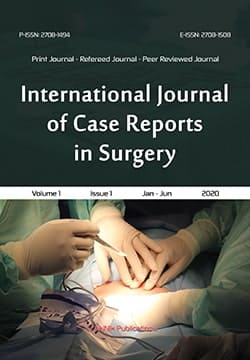2025, Vol. 7, Issue 2, Part B
Prevalence and determinants of gallstone disease in patients undergoing abdominal ultrasound at Alexandria General Hospital
Author(s): Salah Hamzah Kadhim, Layth Mahdi Jumaah Mohamed and Ehab Ali Hussein Jamal-Aldeen
Abstract:
Background: Gallstone disease is a prevalent gastrointestinal disorder, varying globally between 5-25%. Despite its significant burden in the Middle East, Iraqi populations remain underrepresented in research, limiting healthcare planning. This study investigates gallstone prevalence and associated risk factors among patients undergoing abdominal ultrasonography at Alexandria General Hospital, Babylon, Iraq, addressing critical epidemiological knowledge gaps.
Methods: A hospital-based cross-sectional study was conducted over 12 months (January-December 2024) involving 1,247 adult patients aged ?18 years referred for abdominal ultrasonography. Systematic random sampling selected every third eligible patient. Data collection employed structured questionnaires assessing sociodemographic characteristics, medical history, lifestyle factors, and family history. Standardized ultrasonographic examinations were performed using high-resolution equipment by experienced radiologists. Statistical analysis included descriptive statistics, bivariate analysis, and multivariable logistic regression to identify independent risk factors.
Results: The overall gallstone prevalence was 18.4% (95% CI: 16.2-20.8%), with significantly higher rates among females (23.8%) compared to males (9.4%), yielding a female-to-male ratio of 2.53:1. Age-stratified analysis revealed progressive prevalence increases: 8.2% (18-39 years), 21.1% (40-59 years), and 28.2% (?60 years). Multivariable analysis identified female gender (adjusted OR=2.45), advanced age (adjusted OR=3.12 for ?60 years), obesity (adjusted OR=2.67), diabetes mellitus (adjusted OR=1.84), family history (adjusted OR=2.19), physical inactivity (adjusted OR=1.52), and multiparity (adjusted OR=1.73) as independent risk factors.
Conclusion: This investigation establishes the first comprehensive epidemiological baseline for gallstone disease in Iraq, documenting substantial disease burden with clear risk factor profiles. The findings necessitate targeted prevention programs focusing on modifiable risk factors and inform evidence-based healthcare policy development for optimal resource allocation and clinical management strategies.DOI: 10.22271/27081494.2025.v7.i2b.210
Pages: 101-107 | Views: 168 | Downloads: 76
Download Full Article: Click Here









